Hypotrichosis is an inherited hair disorder characterised by the sparsely present or completely absent hair on the scalp. It can also affect the facial and body hair.
It’s a rare condition, and it’s even possible for hypotrichosis to be accompanied by other abnormalities (although this isn’t always the case).
As far as the condition itself is concerned, it has to do with abnormalities in the regeneration of the hair. Since the body is unable to do that, permanent hair loss occurs eventually – even if normal hair is present at birth.
And unfortunately, there are not many treatments for hypotrichosis. Still, there have been case reports of some non-surgical hair loss treatments that show some promise. Here, we’ll take a closer look at the different aspects of hypotrichosis.
What Is Hypotrichosis?
The term “hypo” refers to the “lack of something,” and “trichosis” means an “abnormality of the hair.” So, hypotrichosis is an abnormality of the hair, which results in poor growth.
According to the National Cancer Institute, hypotrichosis hair can have the following characteristics:
- Short
- Dry
- Rough
- Curled
- Light coloured
- Easily breakable
As mentioned above, it’s not necessarily limited to the hair on the scalp. It can also affect eyebrows, eyelashes and the hair on the body.
What Are The Different Types of Hypotrichosis
A review of “Genetic Hair Disorders” published in Dermatology and Therapy identified the following forms of hypotrichosis:
- Hypotrichosis simplex
- Marine Unna hypotrichosis
- Autosomal recessive woolly hair/hypotrichosis simplex
- Hypotrichosis with juvenile macular dystrophy
Let’s take a closer look at them to better understand.
Hypotrichosis Simplex
It’s hypotrichosis simplex that’s commonly just referred to as hypotrichosis. According to the Genetic and Rare Diseases Information Center (GARD), hypotrichosis simplex has two types:
- When it only causes loss of hair on the scalp.
- When it affects the entire body (generalised).
And even when it just affects the scalp, hair loss occurs all over the scalp (diffuse type of alopecia).
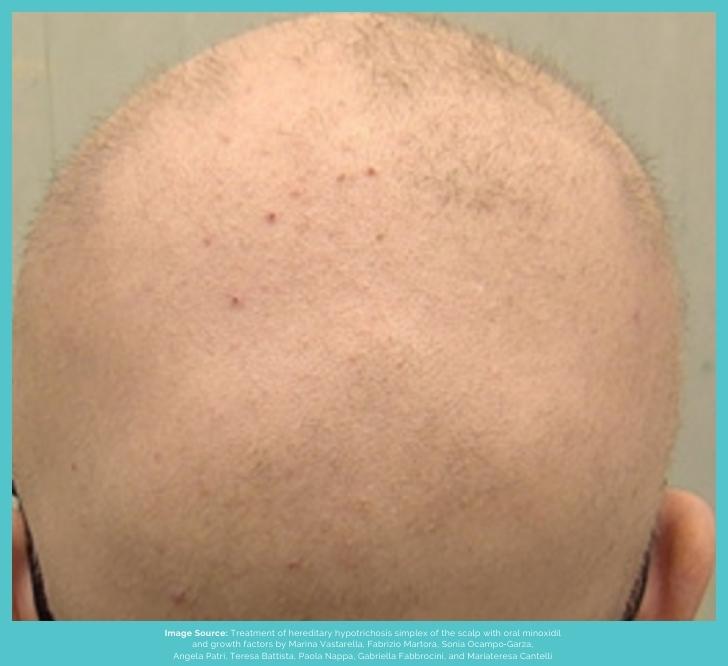
If you have this form of hypotrichosis, it’s possible that you’re born with normal hair at birth.
But as you grow older, hair follicle miniaturisation will take place. It’s when the size of the hair follicle shrinks, with the result being thinning and baldness.
It can start when you’re around 5 years old. And by the time you’re in your 20s or 30s, you’re likely to have lost all your hair (in the affected area). It’s even possible for your hair colour to change – become greyer.
Marine Unna Hypotrichosis
According to Orphanet, Marine Unna is an “autosomal dominant” hair disorder.
What this means is that it’s passed to the child from the parent. And having just one copy of a mutated gene is enough for the child to develop this condition.
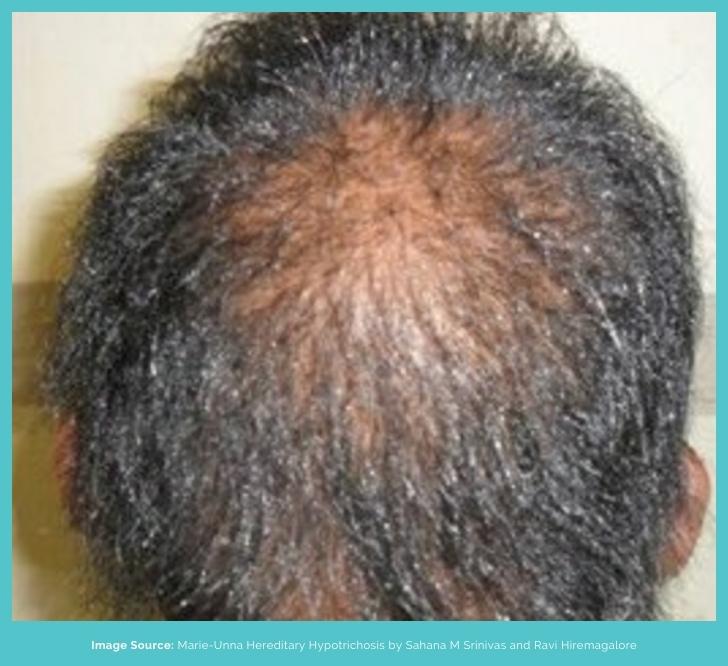
In this form of hypotrichosis, all the scalp, facial and body hair can be affected at birth. It may be sparsely present or not there at all.
The above-mentioned review in Dermatology and Therapy also mentions that it’s possible to grow “coarse, wiry” hair in childhood again.
But you’re likely to lose it again around puberty (while appearing like pattern baldness – the most common cause of hair loss in men and women).
Autosomal Recessive Hypotrichosis (With Woolly Hair)
Unlike Marine Unna, there’s a form of hypotrichosis that’s autosomal recessive instead.
So, the difference here is that not just one but both parents pass down a copy of a faulty gene to the child.
Woolly hair is the distinct characteristic of this type of hypotrichosis. It can be sparse while being “tightly curled” at the same time.
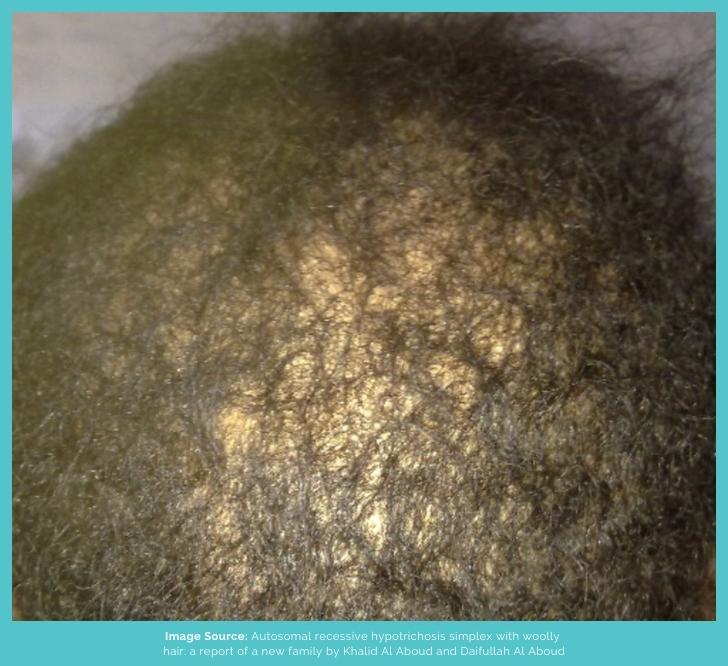
According to MedlinePlus, this condition can be present from the outset. The hair can also be coarse, dry, fragile, light in colour, and only grow a few inches. It may or may not stabilise.
Hypotrichosis with Juvenile Macular Dystrophy
Hypotrichosis with juvenile macular dystrophy is also autosomal recessive. However, in addition to causing hair loss, “juvenile macular dystrophy” also entails the loss of vision.
It’s also very rare and occurs due to mutation in a particular gene. As far as hair loss is concerned, it can be diffuse and limited to the scalp. Your hair might not grow, and it might also be thin and fine.
What Is The Difference Between Alopecia And Hypotrichosis?
Alopecia is the medical term for hair loss. Hypotrichosis, on the other hand, is a genetic disorder that can cause hair loss (or alopecia).
And that’s the main difference between the two. Keep in mind that alopecia can occur due to a variety of reasons.
What Causes Hypotrichosis?
Hypotrichosis is a genetic hair disorder, so it’s caused by the inheritance of faulty genes.
Many different genes have been found to be associated with the different forms of this condition. And as mentioned above, it can be autosomal recessive or dominant.
In any case, the growth of the hair is affected and sometimes the colour as well.
Can Hypotrichosis Be Treated?
There are hardly any treatments for hypotrichosis. However, minoxidil has been used to encourage the regrowth of hair.
A case study published in Dermatologic Therapy showed improvement in the hair of a 14-year-old with a 3-month use of minoxidil.
And in another case study published in the Journal of Dermatological Treatment, minoxidil together with platelet-rich plasma (PRP) injections also showed promise.
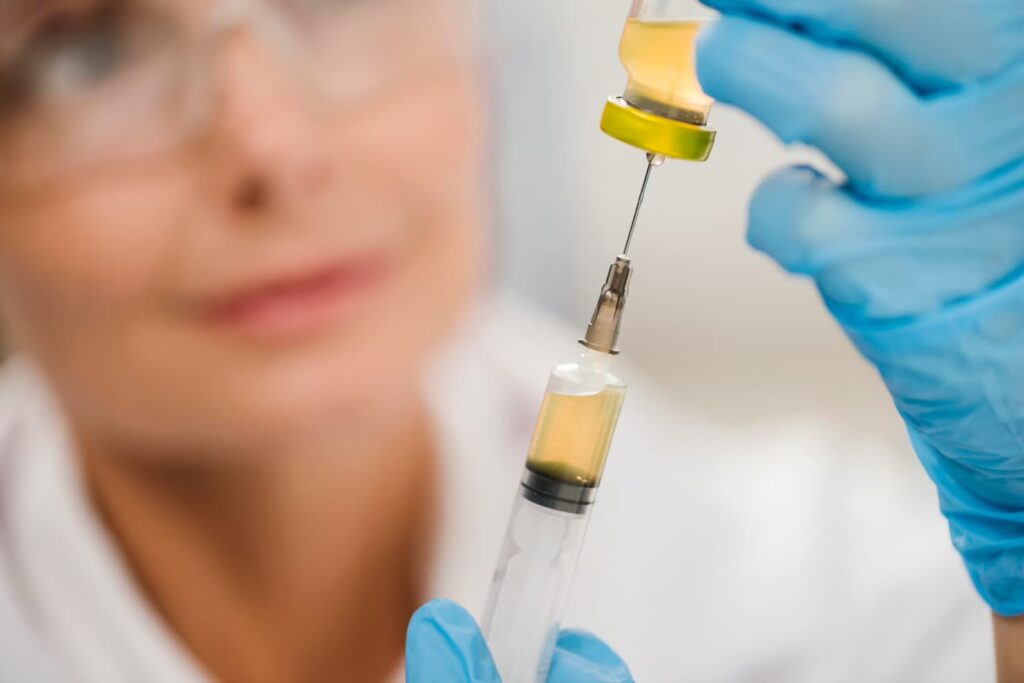
But as far as the treatment of facial hypotrichosis is concerned, there are more options.
Latisse (used to lower eye pressure) has been FDA-approved for eyelash hypotrichosis. Researchers have also investigated the use of this drug for eyebrow hypotrichosis.
Can You Get A Hair Transplant For Hypotrichosis?
Unfortunately, a hair transplant might not be possible for hypotrichosis patients because of the lack of a stable donor area.
For a hair transplant to take place, your surgeon needs to extract healthy hair follicles from the back and/or sides of your scalp. These are then implanted into the bald spots.
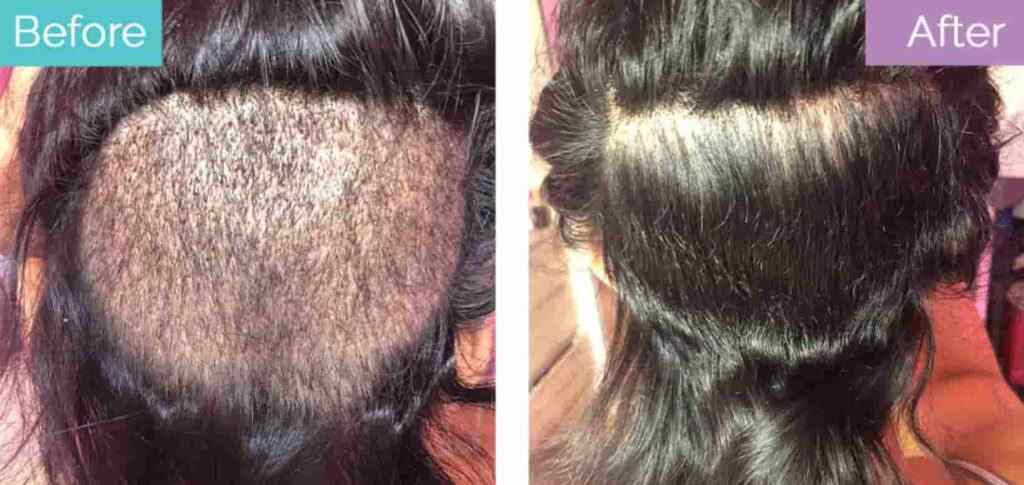
But the problem with hypotrichosis is that this hair loss is diffuse. It’s spread to the entire scalp, so there’s no healthy hair follicle to extract anywhere.
If there is some hair that’s extracted and implanted, it’s likely to give poor results. Still, it’s important to consult an experienced and qualified medical professional about this.
Conclusion
Having a genetic condition like hypotrichosis can be rather distressing. Even when this condition is not associated with other illnesses, hair loss alone can invite undue scrutiny.
And it can also be difficult to accept that there’s not much that can be done about hypotrichosis.
There are not many treatments available (save for some research and FDA- approved drugs). In this case, you can consider camouflage with wigs, hats or scarves.
But if you’re experiencing hair loss, make sure to consult a medical doctor for an accurate diagnosis and an effective treatment plan.
Reviewed and Approved by Trichologist Yaprak Yazan
